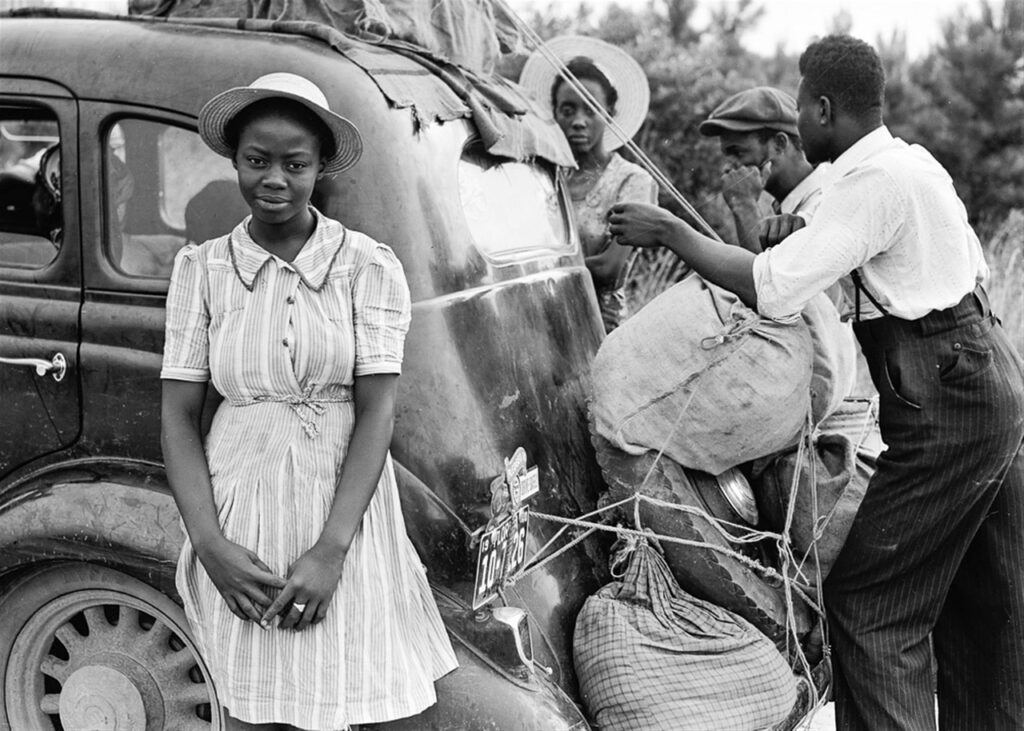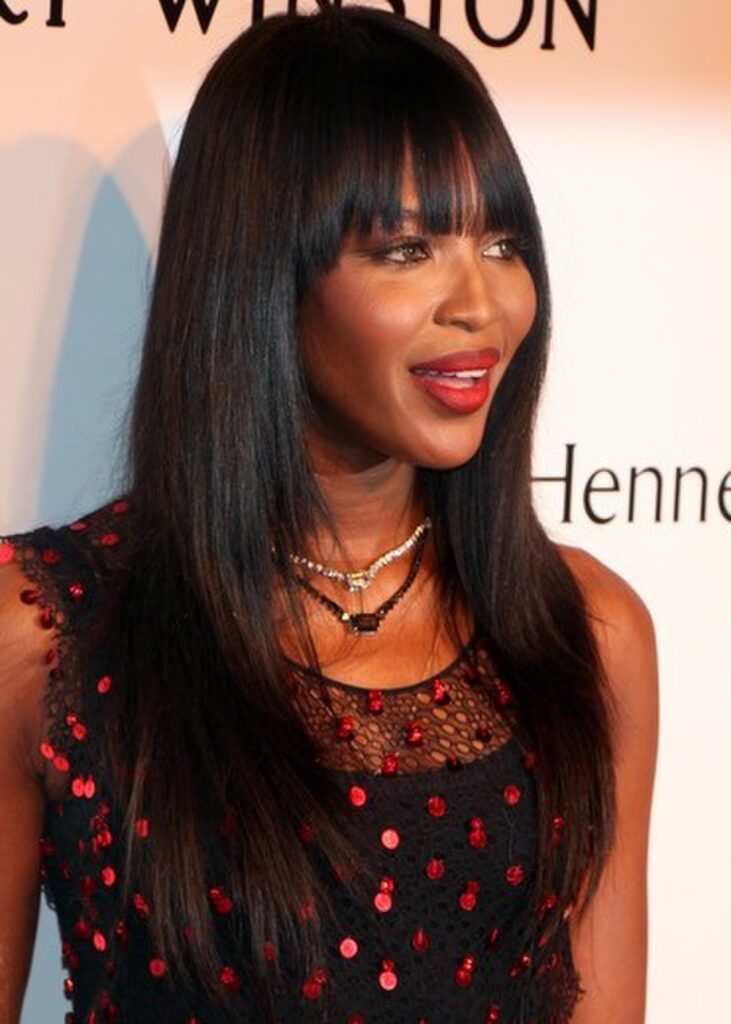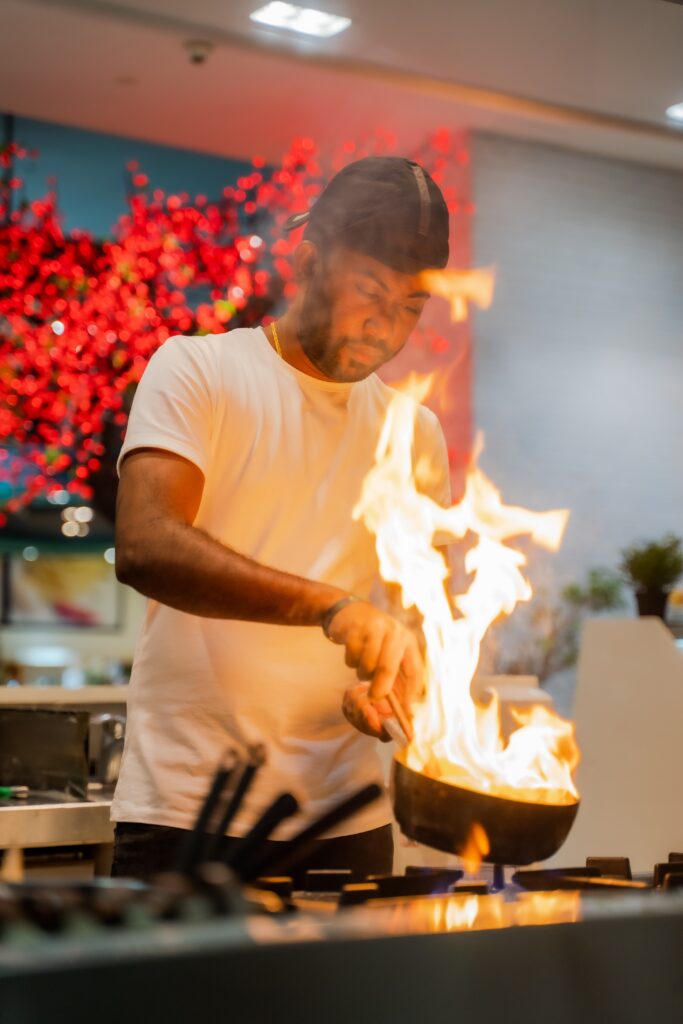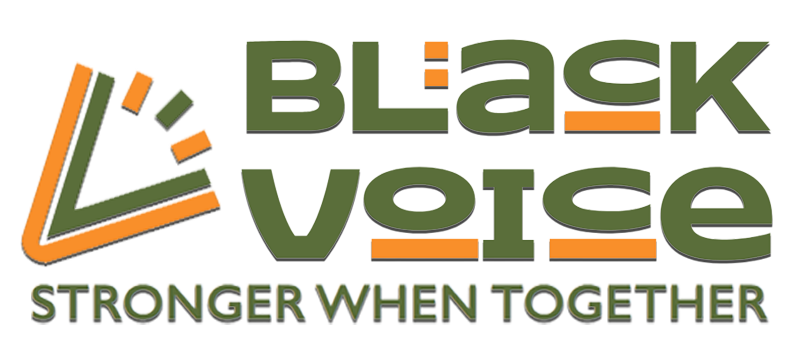Black Owned Plant Companies That Can Brighten Up Your Living Space

By: Lavanya Kathirgamanathan Interior design encompasses a variety of complex and unique designs. These designs have become a success in creating comfortable living spaces in people’s homes. Plants are a unique staging item incorporated in homes because they provide an added touch of nature to one’s home. Plants offer bright colours, bring purity to the environment, and filter the air, making it more healthy to breathe. Greenery has always been a part of purifying air, just like in nature, and reduces stress for those who need to take a breather. There are many Black owned businesses that showcase homey living designs, in particular highlighting the beauty of plants, that make homes look larger. It is important to recognize Black plant entrepreneurs and recognize their creative work ethic. Illustrated are a few Black owned plant companies and businesses that customers can support to liven up their living spaces regardless of the atmosphere and space. These plans provide a touch of nature whether it is purchasing, or in need of inspiration. Rooted by Martine In 2020, Martine Delbrin established her plant business with her husband during the height of the pandemic and has not stopped making an effort to grow her plants since. You can access her plant shop through her Instagram and explore the variety of plants that she has curated for her customers. The aesthetics range from minimalist, mid-century modern, and an emphasis on boho. Natty Garden In 2008, Natty Garden opened up their business and has been for sale ever since. They are located in Brooklyn, and carry plants from succulents to outdoor plants, trees, and flowers. Natty Garden aims to provide its customers with an ethnic, traditional, and cultural palette for design. Their plants are aimed to showcase the true essence and beauty of natural greenery. Their mission statement is to provide plants that encourage therapeutic practices to address mental health concerns. Caring for a living plant has added benefits and allows customers to connect with the growth of a plant. Fleurich Creations FleuRich creates design boutiques located in British Columbia that cater for full service weddings, as well as other special occasions. Their boutiques provide an added touch of celebration that brings joy to their customers and events. The unique combination of florals includes bright and subtle colours that can be used in any event. These boutiques are also ideal for those wanting to take photoshoots with breathtaking florals. Blooming Flower Bar Blooming Flower Bar is located in Cabbagetown, Toronto. It is a female owned business that offers plants and flowers that are fresh cut daily. The scent of these flowers and plants are invigorating and capture the essence of nature. They offer custom bouquets that cater towards a variety of aesthetics and designs. Planting with P In 2019, Planting with P was founded, delivering plants and arrangements to customers’ doorstep. Planting with P offers a subscription box where customers can get their plant box filled with supplies such as a sage stick, DIY plant kit, and samples of plants, herbs, oils every month. Supporting Black owned businesses in general are of great importance that allow individuals to grow their clientele and promote diversity within the plant industry. Plant businesses are not recognized enough, and even further, Black owned plant businesses are not discussed enough. The Good Earth Plant Company curated an article discussing Black Plant Entrepreneurs during Black History month, and their complex journey to gain success with selling plants in the business industry. Click here to learn more.
The Africville Museum

By: Priscilla Wiredu Black Canadian history is important with respect to remembering the struggle of Black Canadians trying to make a living for themselves in a country that is assimilated, marginalized, and alienated into small spaces. The Africville Museum acts as a token; an exhibit that is forever stilled in time that perfectly encapsulates the struggles, activities, and lives of Black Canadians in a small rural Halifax neighbourhood. What is the Africville Museum? The Africville Museum is a museum located in Halifax in Africville Park. From the 1860s, the community of Africville was home to many African Nova Scotians. These residents resided on the North shore of Halifax Harbour. Unfortunately, during the 1960s due to industrialization the community was destroyed to pave way for new businesses, institutions, and community services. As a result, the former Africville residents travelled across the area due to being displaced. In 2010, Africville residents were given a sincere apology for the loss of their culture, heritage, and community, from the city of Halifax. The settlement enabled the Africville Heritage Trust which was an extension to the museum. It consisted of a volunteer board that were community members of Africville that overlooked decisions. The Africville museum is a place where former residents and descendants of Africville can reconnect and learn more about their historical pride. The museum gained popularity with the launch of its unique publications as well as focused resource links about the museum, the history of Africville, and the impact that it has on Black identity in British Columbia. Africville is a visitor attraction that draws attention not only from tourists, but strengthens the province’s heritage and acts as a venue to remember the symbolic representation of Africville and its contributions to the Canadian and African diaspora. The Story The Africville community was first established in the mid-1800s. The community of residents made efforts to pay taxes, work jobs, raise children, and took pride in their lives and achievements. It included a tight knit community where there were brightly painted houses and everyone helped one another. It also included its own school church, community center, and post office for residents. The community continued to operate despite years of petition and municipal taxes. There were also other challenges with respect to a lack of resources such as water filtration, paved roads, and police/ambulatory services. In 1854, industrialization took its wrath over Africville, with facilities such as prisons, slaughterhouses, and infectious disease hospitals beginning to emerge around Africville. Soon, Africville was labelled as a slum with its decrepit look and run down facilities surrounding it. In the 1940s, due to inefficient sewer services from the lack of funding residents were forced to use contaminated water from local springs. From 1964 to 1970, residents of Africvile were forced to be placed in housing projects as their homes were demolished from further industrialization. In 1963, Africville residents sought political reform by forming the Africville Action Committee. In 1983, the Africville Genealogy Society formed and two years later the society mobilized successful and equal reparations from the city of Halifax for Africville’s destruction. Finally, in 2010, a settlement was reached where 2.5 acres of land would be used to reconstruct the church, with an added $3 million allocated towards the construction costs and a public formal apology from Mayor Peter Kelly. Africville’s memory and spirit is remembered to this day. Its heritage and enriched history are being put on display for many to recognize the implications of industrialization and urbanization. Africville is a story of faith, resilience, and strength. Its values continue to inspire future planning committees. Scholarship Program The Africville museum offers a scholarship program in accordance with the AHT and the Waterbury Newton Law Firm. This scholarship program aims to provide financial assistance to former residents and descendants of Africville who wish to pursue post secondary education. This scholarship is of best interest to students who demonstrate efforts in advancing the purpose of the society through community advocacy, resource, publications and training. This scholarship was created through Waterbury Newton’s donation of $100,000 in seed money. The seed money is a portion of legal fees issued from the settlement lawsuit against the city of Halifax. This fund provides annual scholarships with respect to all fields of study, provided that they take place in an accredited Canadian college or university. Applicants must show a legal document that outlines their proof of residency and an acceptance letter of enrolment to qualify for the scholarship. Application forms offer more information about the program and other documentation needed. Donation/Contact Information The Africville Museum also offers a virtual online shop for those interested in purchasing items. They also have a donation page set up for those willing to help keep the image and legacy of Africville alive. The museum operates from Monday to Friday, 10AM-4PM, with admission as follows: Adults: $7.00 Students/Seniors: $6.00 Children aged five and under are free. Their contact information is also as follows: Address: 5795 Africville Road, Halifax NS. Phone: (902)-422-1116 Email: projectafricvillemuseum@gmail.com They also wish to be connected via social media: Facebook Instagram Twitter YouTube
Black Business and Professional Association

By: Priscilla Wiredu When it comes to discussions centered around business and professionalism, Black people continue to face challenges when finding the proper connections. They also lack trust in their partnerships, coupled with other racial barriers within the workplace. However, through hard work and initiative, there are focused organizations that cater towards providing resources for Black people to confide in, to ensure that they are being set up for success. The Black Business and Professional Association is one of these organizations. What is the BBPA? The Black Business and Professional Association (BBPA) is a charitable organization that promotes equality and new opportunities for the Black business, employment, education, and economic development communities. These opportunities provide the Black community with resources that strengthen research and networking. Founded on October 21, 1982, Black businessman Denham Jolly invited members to attend a meeting at the Underground Railroad. This is known as a popular local restaurant located in downtown Toronto. What started as a discussion quickly turned into the creation of an association, a committee, and organization in which it recognizes the contributions of Black people in business. The Black Business and Professional Association aims to help Canadian Black communities by offering programs that support business incentives and promote professional excellence. This includes higher education that will lead to economic success and stability within the workplace. BBPA has a central mission statement that values and encourages the pursuit of entrepreneurship, business, and success. Their strategy includes: Programs The BBPA offers a multitude of courses to help those interested in business with their goals. Some of their most popular courses are: BAIDS The Business Advisory Implementation Development Services (BAIDS) is a customized program that intends to motivate and empower Black businesses who lack the resources and credentials to operate professional functions. This program teaches students about challenges in marketing, staffing, and tax law. The BAIDS program serves as a starting point for Black entrepreneurs that offer realistic and essential support to achieve long-term success. The Youth Entrepreneurial Development Training Program The Youth Entrepreneurial Development Training Program is a 20-week program that includes topics such as social enterprise development and expressions of creative arts. Alongside creative and performing arts mentorships, they offer a 14-week culinary arts training program for young Black entrepreneurs. According to the application form, the requirements are as follows: Applicants under 18 years of age must download the form and have it signed by a legal guardian, then mail it to the BBPA. Individuals over 18 can fill it out online and submit it. The BBPA Mentorship The mentorship aims to provide resources to the Black youth who require additional support. This program is open to both men and women who are 18 years old and above. This mentorship program specifically offers initiatives centered around employability, sports, healthcare, marketing, video production, and technologies. Mentors are assigned to those with respect to their age cohort, shared interest, and specialized areas of expertise. These mentorships require one-on-one training and run for six months. Meetings are held twice a month, and at the end of each month there is a feedback form to report evaluations. Boss Women Entrepreneurship Program The Boss Women Entrepreneurship Program is an event that empowers Black women entrepreneurs with the skills and resources to excel in business and overcome certain barriers. The BWEP offers a 13-week bootcamp that teaches Black women about entrepreneurship and ways to execute a business venture, move up in the business world, set financial goals, and learn accounting and sales. The program is hosted by Nadine Spencer, one of Toronto’s most prominent Black female entrepreneurs that has hosted many masterclasses with other credible partners. They have other facilitators which include Ryerson University, TJMAxx, Futurpreneur, and the Government of Canada. Applicants who are interested are required to sign up over Zoom to secure a spot. Scholarships The BBPA provides a National Scholarship Program that was established in 1986. This program is dedicated to supporting academic success among Black Canadian youth. This volunteer board was created in hopes to decrease the rate of school drop-outs among Black students, due to the lack of funding. It is supported by a multitude of programs and has an extensive list of awards and scholarships available. In 2019, the BBPA awarded a total of 54 scholarships and together these are valued close to $180,000. For the past 34 years, the BBPA Scholarship Fund issued over 1,150 scholarships, valued at $4.5 million. This was possible due to the organizations and individuals’ gifts to their endowment funds. The BBPA offers specialty scholarships, grouped into two subcategories: The BBPA Future Leaders Scholarships generate a majority of its funds from grants on behalf of the Government of Ontario, individuals, and corporations. These scholarships are offered to students who are the first in their family to attend a formal university or college. The BBPA Legacy Scholarships are scholarships that are funded by corporations or Black Canadians. These individuals have put forth their talents in arts, professions, science, business, technology, and politics. These scholarships are unique because they are named after the person who demonstrates exceptional talent. These scholarships are reserved for students who demonstrate stellar academic excellence, community service, and/or special needs. The Xero Scholarship is worth $5000 and is awarded to a Black student enrolled in accounting at a Canadian college or university. It is granted based on academic merit and a legitimate reason for financial need. BBPA offers a customized application form to help facilitate the process of selecting a scholarship and applying for it. Events The BBPA offers many events for those interested, but the three most common and popular ones are as follows: The Harry Jerome Awards The BBPA offers awards in memory of Harry Jerome, a Black Canadian track athlete who after retirement, joined the Federal Ministry of Sport to put together detailed coaching manuals for children. He created the Premier Sports Program in British Columbia schools, which provided extensive opportunities for young athletes aspiring track and field. In 1971, Jerome was recognized
Barrier-Breaking Black Entrepreneurs

By: Sydnee Walcott Over the past few years, there has been a surge among Black entrepreneurs that have the desire to generate their own income independently without relying on a salary or conforming to a company’s protocol. This level of independence comes with a distinct responsibility of managing several duties that are riskier when launching a business. Between the years of February 2020 and February 2022, the rise of Black entrepreneurs among Black communities increased. Statistics reveal that the number of self-employed Black professionals increased from one million to two million. The COVID-19 pandemic is a contributing factor that explains the rapid growth in Black entrepreneurship and small Black owned businesses. As many Black workers were affected by layoffs and experienced limited employment opportunities during the pandemic, many decided to hone in on their creative skills to create their own businesses and set new goals for themselves. This article will pay tribute to some of the world’s most influential Black entrepreneurs who broke down racial barriers in different sectors. O.W. Gurley Born to formerly enslaved parents, O.W. Gurley was a self-educated individual who dreamed of reaching new heights with respect to his career. He took steps to ensure his vision became a reality. Before becoming an entrepreneur, Gurley worked as both a teacher and for the U.S. postal services. During the time he spent working these jobs, he discovered that he wanted a lifestyle that aligned with his aspirations. Gurley resigned from his old jobs to seek freedom, opportunity, and wealth in the Great Oklahoma Land Rush. Gurley had the ambition to transform Oklahoma into a new life for African Americans since emancipation. Hurley had achieved a number of accomplishments, as he ran for county treasurer, became the principal at the town’s school, and opened a general store. Once Gurley learned about the giant oil fields in nearby Tulsa, he was quick to sell his store and land, and moved to Tulsa for another intriguing venture. Gurley believed that Black people had a better chance to achieve economic success if they each shared their own resources and worked together to support each other’s businesses. He purchased 40 acres of land in Tulsa and the acres of land would soon be named the Greenwood neighbourhood. Greenwood transformed into a location of wealth, education, and technological advancement filled with Black doctors, lawyers, realtors, and Black-owned luxury hotels. With the area encompassing Black-owned businesses, Booker T. Washington labelled the area as “Black Wall Street.” Greenwood was a place for Black people to escape economic, social, and political oppression within the Deep South. By 1920, Black Wall Street became a bustling neighbourhood with economic success that opened up new employment opportunities for many Black people. Unfortunately, the town was destroyed in the 2021 Tulsa Race Massacre. However, this devastating news did not stop African Americans from working together to help rebuild Greenwood. Many African Americans saw this as a challenge to include new opportunities that allowed them to excel economically. A year after the massacre, Greenwood was massively reconstructed without the help of the greater Tulsa community. Following the reconstruction period, there were 80 businesses who successfully launched their vision and achieved support. Although Black Wall Street has changed in several different ways, work has been done throughout the years to help restore the town to its former glory and uphold Gurley’s legacy in establishing economic opportunities among Black people. John H. Johnson Journalism offers many avenues to discuss topics such as sports, politics, lifestyle, music, and culture. In the Black community, John H. Johnson became the most influential African American publisher to receive praise for his editorial success. Johnson was introduced to the industry when he started to work for the Supreme Life Insurance Company while attending the University of Chicago. His job required him to compile a series of news clippings, which would then lead him to generate meaningful topics for a magazine centered around Black people. In 1942, after graduating from university, he was eager to put this plan into action with the help of a $500 loan from his mother’s furniture and raised an additional $6,000 through subscriptions to create the magazine Black World. The now-defunct monthly magazine was an unabashed imitation of Reader’s Digest, which published a series of articles that discussed African American life with an emphasis on racial evolution in society. 10 years after the close of Black World, the magazine relaunched and continued to stick to the original concept while focusing on African American literature, history, culture, Black power, Black arts and entertainment, and Pan-Africanism. Three years after the launch of the original Black World, Ebony magazine was founded and has rightfully earned the title of the number-one African American magazine in the world. Ebony is an African American news and photography magazine that resembles Life magazine. Initially, the magazine highlighted African Americans within the entertainment and sports industry but has since focused on including Black identity and success from all sectors. In 1951, Johnson published the Jet magazine. The name of the weekly magazine stuck with Johnson because the news section includes topics that spread quickly among the masses and he wanted the magazine to symbolize “Blackness and speed.” The magazine covered entertainment, politics, sports, social events, and features on different personalities, places, and events geared towards African Americans. Jet garnered national attention for their coverage due to the showcasing of Emmett Till’s murder with graphic images of the teen’s body placed in an open casket. The magazine became defunct in 2014, before being revived two years later publishing virtual articles. Johnson created a legacy for himself as an influential leader who broke barriers and helped create a platform for Black people within the publishing industry. Cathy Hughes Television is a viable source of entertainment when spending time at home, but the radio is where many tune in when travelling. Cathy Hughes began her radio career at KOWH (AM), a station owned by a group of talented and respected African American professionals. This station
Moves That Make Naomi Campbell Iconic

By: Sydnee Walcott Intelligence transcends beyond the scope of cognitive thinking. The term intelligence is commonly associated with ideas that center around our inner thought process. However, there is talent demonstrated externally that showcases our aptitude to think creatively and transform art into visual appeal. Being successful does not limit us to our thought process, it can transcend to other realms such as modelling. The modelling industry is unique because it allows models to express their talent in other artistic forms. The fashion, photography, and movements are elements that encompass a successful show. Everyday, people continue to find success in more than one venture, and one of the top supermodels of the 90s just so happens to be one of those people. Born on May 22, 1970, in London, England, Naomi Campbell made herself a household name in the modelling world as an extraordinary supermodel. Campbell’s career in the entertainment industry began at the age of seven when she appeared in the music video for the late Bob Marley’s song “Is This Love.” Her career in modelling started at the age of 25 when she was scouted by Beth Boldt, head of Synchro Modelling Agency. Campbell’s modelling career took off and continues to gain substantial recognition almost 40 years later. For a model, the duration of her time is significant as she is able to hold the title of one of the most experienced Black models to walk the stage. Besides her stellar career as model, this article will pay tribute to some of her other business ventures and accolades. Modelling Career Once Campbell made the decision to sign to Synchro Modelling Agency, her journey began to skyrocket as she was one of the most in-demand models throughout the late 1980s into the 1990s. Campbell became a trailblazer within the industry as she broke down many barriers as a Black model and opened up the doors for many aspiring models of colour. Her unique features brought attention to her name and many were stunned with her captivating appearance and aesthetic. Appearing on the cover of more that 500 magazines, Campbell was the first Black model to appear on the covers of TIME magazine, French Vogue, Russian Vogue, and British Vogue. She has also been featured in campaigns for high-end brands such as Burberry, Prada, Versace, Chanel, Dolce and Gabbana, Marc Jacobs, Louis Vuitton, Yves Saint Laurent and Valentino. Campbell is a model who is not afraid to take risks as she engaged in the process of designing a handful of extraordinary outfits and helped model them on the runway. Some of these outfits include the Versace safety pin dress, Jean Paul Caultier cone bra, Alexander McQueen oyster dress, and the Valentino Couture dress. Along with Cindy Crawford, Claudia Schiffer, Linda Evangelista and Christy Burlington, Campbell is one of the “big five” supermodels to leave a significant impact on the modelling industry and how the industry views models of colour. Businesswoman Given her stellar success within the fashion industry, as a model who broke down racial barriers, Campbell seeked new business ventures that allowed her to excel as a fashion designer. Campbell was eager to use the experience she gained from walking modelling shows and apply her knowledge to design clothing items. Campbell has been a part of many business ventures over the years and sees no sign of retiring anytime soon. At the beginning of 2023, Campbell launched her first masterclass where she shared the knowledge from her three-decade long career within the modelling industry. A few insights aspiring models can learn from Campbell’s advice is how to handle rejection from judges. She also provides advice on common misconceptions about the industry. It is Campbell’s commitment to teach others on how they should carry themselves in the modelling industry and how to balance respect, integrity, and authenticity. In July of 2023, it was announced that Campbell had partnered with Pretty Little Thing for a landmark collection. Set to launch in September during New York Fashion Week, the collection will consist of celebrity-inspired looks at an affordable price. This is an opportunity for fans to feel a sense of belonging within the community. It allows fans to wear clothing items that are similar to the outfits they see in fashion shows. These designs are meant for customers to not only support her achievements but allow her to reach new audiences. The collaboration is of great importance because it will be Pretty Little Thing’s biggest collaboration to date. Philanthropy In 1993, Campbell’s charity work began when she started to work with the late Nelson Mandela. He referred Campbell as his “honorary granddaughter,” for her work in promoting the welfare of children in Africa. Mandela had always encouraged Campbell to use her voice to speak up for the children in Africa and use her platform to evoke a positive message. This has led to the creation of the Fashion for Relief. Since 2005, Campbell continues to showcase her humanitarian efforts and has raised over 4.5 million pounds to help fight against Ebola, provide relief for those impacted by natural distorters such as Hurricane Katrina in 2005, the 2010 Haiti Earthquake, the 2011 Japan Earthquake and Tsunami, and the 2009 India terrorist attacks. Through Fashion for Relief, Campbell has been working with other charities to help provide food, shelter, and medical treatment for children affected by the ongoing civil war in Syria. These survivor packages substantially change the lives of those affected by the war and provide a sense of relief to those who are suffering from a lack of supplies. Her initiatives not only provide credibility to the work she has accomplished but reveal her aptitude to seek ventures that help civilians in failed states. In cases where Doctors Without Borders can be difficult to facilitate, charitable organizations such as Fashion for Relief can provide relief during humanitarian crises’ that infringe human rights. Campbell continues to show her audience the vast opportunities women of colour can engage in. What
BlackOwnedTO: The Black eBay for Toronto Black businesses

By: Priscilla Wiredu In today’s savvy business world, Black businesses have unique, safe-space networking that can ensure inclusivity and the chance for local businesses to grow. BlackOwnedTO is an example of a successful platform that showcases Black businesses. BlackOwnedTO is a start-up shop in Scarborough Town Centre selling products from local Black entrepreneurs. Founded by Kerin John in 2020, it started as a directory on Instagram for Black businesses. BlackOwnedTO would soon evolve into a successful website and directory for Black sellers and vendors. In addition, BlackOwnedTO offers an online platform devoted to highlighting Black businesses across the GTA. Created to help tackle the difficulty of finding local Black businesses within the city, it is an economically-rewarding system that helps give back to local communities. How it Works The front page of BlackOwnedTO’s website includes four categories: Skincare, Candles, Haircare, and Kids. Depending on which category you click on, you will come across a long list of items that pique your interest or what you purchased in store. From books to greeting cards to baby supplies, there is virtually everything you could want at a reasonable pricing. They have an online form for those wishing to become a vendor within their company and offer many options to pay for the items they advertise on the website. Other Activities At the end of July, BlackOwnedTO holds an event known as Foodville Fest, a summer event celebrating African, Caribbean, and Afro-Latino foods. Equipped with Black vendors, DJs, specialty chefs, and live performances, Foodville Fest is a charitable safe space for Black people within the community that highlights the importance of Black cuisine. BlackOwnedTO has partnered with Private Cay Media to make Foodville Fest happen. Accomplishments and Reviews To this day, BlackOwnedTO’s Instagram has acquired well over 70k followers and has held pop-up shops in Square One, holiday markets, and Black History Month events. Their Scarborough location has an average rating of three point nine out of five stars on Google. They have also appeared on CBC, 6ixBuzz, and Breakfast Television about their mission and established partnerships with other businesses like CIBC, Interac, and Toronto Public Library. BlackOwnedTO is more than just a business. It ensures inclusivity and opportunities for up-and-coming Black entrepreneurs. It offers a safe space as well as a great place to start up a business and make money for one’s products and/or talents. BlackOwnedTO provides initiatives to help local Black communities start their business ventures in a variety of different ways. Contact BlackOwnedTO BlackOwnedTO is located at: STC 300 Borough Drive Scarborough, Ontario M1P 4P5 (416) 290-1313 STC@BlackOwnedTO.com They also have a contact page and form for further inquiries.
Exploring African Dishes From Around The World

By: Lavanya Kathirgamanathan Food is a necessity in order to survive, yet it offers a dimension of innovation that has people celebrating its cultural roots. Food brings families together, creates a legacy among various cultures, reconnects people with their traditions, and brings an unforgettable experience to the table. Many of the popular African dishes restaurants market originated from different parts of the world. These dishes embody different flavours, vibrant colours and spices, and incorporate fresh ingredients. African dishes captivate the essence of flavors from all around the world and include flavour profiles that are unheard of. Many African dishes include unique flavors that tell stories of cultural traditions, which brings family and friends together no matter what season. These dishes are created with specific cooking times in mind, marinated, and seasoned to perfection. These steps are critical to ensure flavours are being brought to life. It was announced on February 9th, 2023 that Tre Sanderson was the first Black chef to win Top Chef Canada. Sanderson has been cooking for over 10 years and continues to incorporate Caribbean spices in delicacies. These delicacies include turning Jamaican escovitch fish into gourmet works of art. His goal is to modernize traditional dishes that could cater to everyone’s taste buds. The opportunity to compete in Top Chef Canada and excel has allowed Sanderson to reflect on his cooking experience and inspire emerging Black chefs to take risks in the cooking industry. For Sanderson, homemade traditional food has always been a staple for him, with flavours that bring warmth and comfort to his palette. Sanderson is committed to seeking opportunities and ventures that push him to take risks in the kitchen and bring Caribbean cuisine to Michelin-star restaurants. His success reminds aspiring Black chefs that people of colour can incorporate their cultural roots to achieve success in the food industry. Aside from Sanderson’s success, this article will further showcase different African dishes that hold unique flavors and cultural significance. Ndole Ndole is a dish created from Cameroonian culture. It is a stew made of spinach, crayfish, shrimp, and beef and is always placed at the table when it comes to a party. This dish originated in central Africa and showcases the rich flavors of fresh African ingredients. The dish is marinated with many spices, providing a wholesome and comforting taste when consumed. When an individual devours Ndole, they will recognize the distinct flavour profiles within the first bite. Typically, Ndole is served with plantains, rice, or fufu. This wonderful Cameroonian dish represents the top cuisine in central Africa and brings a large crowd to the table. Jollof Rice Jollof rice is a dish packed with flavor and is one of the many global dishes well known for the delicacy, the flavors, and the representation that it brings to western Africa. Jollof rice is a staple dish in Nigeria, Ghana, Sierra Leone, Liberia, and also in Cameroon. Although jollof rice is the main dish, it can be made in different variations. The different types of jollof rice include Gambian, Nigerian, Liberian etc. Each dish is made with the same ingredients but include distinct cooking times, spices, and rices. The common ingredients found in jollof rice include tomatoes, onions, peppers, garlic, and meat substances. Jollof rice is a dish that allows families to connect to the comfort of spices and share laughter over simple yet delicious homemade food. Mafe Mafe is another beloved dish in Africa that is filled with bold flavors, and is commonly known in Senegal. The dish mainly consists of peanuts and tomato sauce. In different parts of Africa, this stew embodies representation in different ways. This dish was created during the colonial period, a time where there was an increased production of groundnuts. Mafe was originally created in Mali before it spread across western Africa and generated popularity. Mafe includes many ingredients such as onions, peanuts, tomatoes, beef, lamb, chicken, and fish in other recipes within the region. It is often served with rice or fufu. Mafe is a flavorful dish that will provide satisfaction and the desire for a second serving. African cuisine incorporates many vibrant flavors that capture each country’s love and culinary experiences. The farmers who control irrigation when tending to agriculture care for the quality of fresh produce that goes into making these dishes. These unique blends of ingredients and spices bring families close together and provide a sense of tradition during special occasions. These dishes also inspire other countries to include African delicacies in their restaurants.
Five Black owned Restaurants in Toronto

By: Lavanya Kathirgamanathan Toronto’s food culture embodies innovation, talent, and unique flavour profiles. The city welcomes a variety of different dishes that offer an invigorating experience. The food scene reflects Toronto’s multicultural population and provides a variety of different options for everyone’s palette. Some of these flavours are unheard of due to their innovative and tasty profiles. In particular, Black-owned restaurants have emerged through the excellence of culinary cooking, demonstrating diversity through the cuisine of the African diaspora. This article acknowledges and celebrates Black-owned restaurants in Toronto that customers can try out and support this summer. Chubby’s Jamaican Kitchen Located at: 104 Portland St Chubby’s Jamaican Kitchen brings flavour to Downtown Toronto with its Jamaican cuisine. This restaurant shares their excellence and unique recipe of jerk chicken and oxtail, catering to a variety of palettes. Chubby’s Jamaican Kitchen shares many traditional recipes that incorporate a modern take to Jamaican cuisine. Their warm and comforting dishes encourage customers to return the next day to enjoy more. This restaurant is one of a kind and will bring a smile to anyone’s face with every savoury bite! Nunu Ethiopian Fusion Located at: 1178 Queen St W Nunu Ethiopian Fusion brings the aroma and essence of Ethiopia to the streets of Toronto. This restaurant creates a homey dining experience offering an adventure of different dishes from Ethiopian cuisine. Nunu serves delicious and rich coffee with an invigorating aroma that customers can smell when they enter the restaurant. This fusion kitchen shares food from different parts of Ethiopia with dishes that include: lentil dishes, chicken or beef tibs, stews, and many more. This Ethiopian restaurant is fitting for those who seek a comforting meal. The Real Jerk Located at: 842 Gerrard St E The Real Jerk in Toronto is one of the most prominent places that is located in a place called flavour town. This restaurant has been established for over 30 years and still brings heat to the kitchen with its aroma, flavour, and energy. The Real Jerk shares various Caribbean dishes such as jerk chicken including goat curry, shrimp dishes, and roti. The Real Jerk is one of the many staples in Toronto customers will not take their eyes off of. The restaurant has incorporated colours including red, green, and yellow that will distract viewers from their current plans and attract them to check out delicious aromas of the islands. Tasty’s Caribbean Cuisine Located at: 405 Spadina Ave Tasty’s Caribbean Cuisine is one of the many diverse restaurants serving authentic Caribbean flavours in Toronto. This Black-owned restaurant creates a variety of dishes inspired by the cuisine used in the tropical islands of the Caribbean. Dishes include jerk chicken, macaroni pie, lentil peas, and roti wraps. These staple foods allow customers to enjoy and indulge in without worry, just simply satisfying and fulfilling vibes! Every bite is packed with flavour, and the restaurant includes an incredible and comfortable ambiance. This restaurant is a go-to for a quick bite, a sit-in, or a take-out meal customers can enjoy at home. Over the past few years, there has been an emergence of Black-owned businesses across different industries. The food industry has been creating an environment for business owners and customers to try new foods and put forth their creativity within Toronto’s food scene. Supporting restaurants within the Black community promotes diversity and inclusion that touches on the importance of recognizing the diverse culture that Toronto embodies. It is important to support local and small businesses, especially those of colour because they offer a new invigorating experience which encourages customers to step out of their comfort zone.
Black Owned Skin Care Brands

By: Lavanya Kathirgamanathan Black owned products are not praised enough for the hard work that goes into perfecting a formula for different skin tones and skin conditions. These formulas include innovation that breaks barriers as healthy ingredients are a central focus. In fact, many Black creators in the beauty community do not get enough recognition for the hard work that goes into revolutionizing the beauty community. In an article by McKinsey & Company, they state that Black owned brands only make up two per cent of revenue within the beauty world. The article also mentions that in the United States, only four to five per cent of employees involved in the beauty industry are Black. This statistic is alarming because it exemplifies the lack of involvement on behalf of the Black community in the beauty industry. This news does not receive enough recognition on how the Black community strives to invent new trends and normalize wearing bold, energetic, and fun colours. Although there is a lack of recognition, given that generic brand-named products have taken over the shelves, Black owned makeup brands are still a viable option and viewed as trendy in today’s society. Outlined are a list of Black owned skin care products that you can support. Black Girl Sunscreen This sunscreen brand is curated exclusively for women of colour. What more could one ask for in extreme heat when you have melanin? This brand is marketed towards all ages, from kids to adults, and emphasizes the lack of white caste shown on skin when applying the product, which is usually the issue for most sunscreens. The brand is working towards their goal of bringing awareness to how essential good skin protection is through their products without a worry of a harmful reaction. Karité Karité’s definition in French means shea butter. This brand focuses on the quality of their product. Compared to drugstore products that carry shea butter, this brand offers a higher concentration of shea butter unlike other generic products. This product can be found at your local Shoppers Drug Mart. In fact, Karité claims that their body cream has one of the highest concentrations of shea butter in its purest form, on the market today. The company partners with women-run farming co-ops in Ghana. Karité also takes proactive steps to ensure they understand where their ingredients are coming from, rather than handing it to somebody in a different country to do all the work, which is what we commonly find with other skin care products. Rosen Skincare Pink and pretty, this skin care brand is transforming the next generation of breakout care. Skin care brands that focus on acne solutions are hard to find. Rosen is not only concerned with creating a product that targets breakouts, but wants to create a space for a diverse community to use. Every skin type is different, but there are not enough conversations that address how dangerous some products can be for darker skin. This brand focuses on the prevention and repair of hyperpigmentation as well as acne for darker tones. Although their skin care products accommodate different skin tones, the goal for Rosen is to make this product less harmful for those with a pigment in their skin colour. 4 5 6 Skin They claim that this product is the science of skin tone. Noelly Michoux, Co-founder and CEO of 4 5 6 Skin, always faced issues with finding a solid skin care routine that was compatible with her melanin. It is stated that FDA regulation for a regular SPF is only tested on limited fair skin, meaning that not all skin tones and skin types have the benefits they need through SPF products. Located in France, this brand has carefully researched their independent laboratory for the past five years to break the barrier of solely testing skin that is considered fair. 4 5 6 Skin is one of the many melanin driven skincare lines that is safe, and allows customers to create a unique formula using AI technology to create a custom product without the worries of using yet another generic product catered towards all skin tones.
Take a Look: Black Authors You need to Discover

By: Lavanya Kathirgamanathan In life, we all have a unique story to tell. Our stories are what shape the plot authors get to write about. Globally, in just a year, over 500,000 to 1,000,000 books are written from a variety of different genres including horror, mystery, thriller, humor, and action. These genres cater towards a variety of different audiences that allow reading to be enjoyable. Books also offer different lengths. Many books require a whole series to execute a complex plot. Every book has a beginning, middle, and an end that carries the reader through a series of events filled with entertainment. In the world, many Black authors gain inspiration to write through their own personal experiences and creativity. In society, Black authors and people of colour are unrecognized compared to White writers, yet each story shares who they are and what they want the readers to comprehend. Outlined is a list of authors who create unforgettable storylines and bring an engaging experience to the Black community. Ashley C. Ford is a Black American writer and educator who writes with a focus on race and sexuality in her publications. Sites like The Guardian, Buzzfeed, and Elle are where people can read some of her written work. Ford is most famous for her book Somebody’s Daughter, an exclusive memoir that illustrates her childhood. Ford transforms the world of literature as she uses her skills and personal experiences dealing with an incarcerated father to highlight the reality of success being a Black author. For Ford, her sense of freedom is achieved when writing pieces of literature that advocate for racial inequalities. Books are a powerful mode of resistance against oppression as our opinions and ideas are what shape and influence our audiences to behave and think differently. Books allow us to reflect on our own privilege and make use of the resources we are offered to share our voice wholeheartedly. Chelene Knight is a Canadian writer and poet who was born in Vancouver. Knight is the author of the poetry book Braided Skin, which shares the experiences of mixed-race ethnicity, growing up in poverty, and urban childhood. Knight transforms literature by discussing the reality of growing up poor. She addresses that in circumstances where an individual is confronted with poverty there can be greater opportunities for success. These themes shape how individuals view the term “Braided” as it can refer to an intertwining of races and blending to achieve cohesion and conformity. The book unravels concepts that can allow one to recognize symbolism of unity and hope to achieve equality. Kern Carter is a Toronto author and freelance writer. He created a novel called Boys and Girls Screaming, which unveils the concept of how family trauma and sisterhood coincide. Carter hoped to create a storyline that sparked conversations in the community and wanted it to be an entertaining, eye-opening story. Kern’s vision is to encourage academic institutions to adopt practices in facilitating emotional support groups to those who suffer from trauma. This book highlights that schools have a responsibility to provide additional services to students. These services allow students to interact and form close relationships with those who face similar struggles. Angie Thomas is a Black American author born and raised in Mississippi. Thomas is known for her award-winning novel, The Hate U Give. The Black Lives Matter movement played a role in the inspiration for the novel. This novel is important because it addresses issues of inequalities in the criminal justice system. When Khalil, who is unarmed in the novel, is shot by a police officer unjustly it creates stereotypes that place Black people at a disadvantage for being labelled as a criminal. This novel highlights the reality between Black people and the way they are perceived in the criminal justice system that demand reform. Octavia E. Butler was a Black American science fiction writer raised in California. She was recognized as one of the best science fiction writers in the community. Butler illustrated Parable of the Sower, which takes place in the future and focuses on a teenager who suffers from hyper-empathy. This condition means that in circumstances where individuals face hardship their emotions are weak. The story addresses this issue, while trying to navigate in a society that is slowly collapsing. Butler’s story line incorporates the history of how society views White people as wealthier and “more safe,” while racialized people were not treated with respect or safely. The story also focuses on Black communities futuristically, and how it might be. Alexandra Elle is a Black American author who lives in Washington, DC. She is a bestselling author and wellness educator. Elle is known for her guide, How We Heal: Uncover Your Power and Set Yourself Free, which offers techniques on self-healing, mindfulness, and activities involving journaling.This is a space for readers to express the oppression and discrimination that they have been through for decades, and gives them a place to open up about their personal feelings. As individuals are confronted with different lives, circumstances, and roles these healing practices are illustrated to provide a sense of direction in times of disarray. This can be useful when we go through stress and grievances that cannot be dealt with appropriately through health care services. More often, the natural route to healing is in our best interest to adopt independent practices that are healthy and positive.
